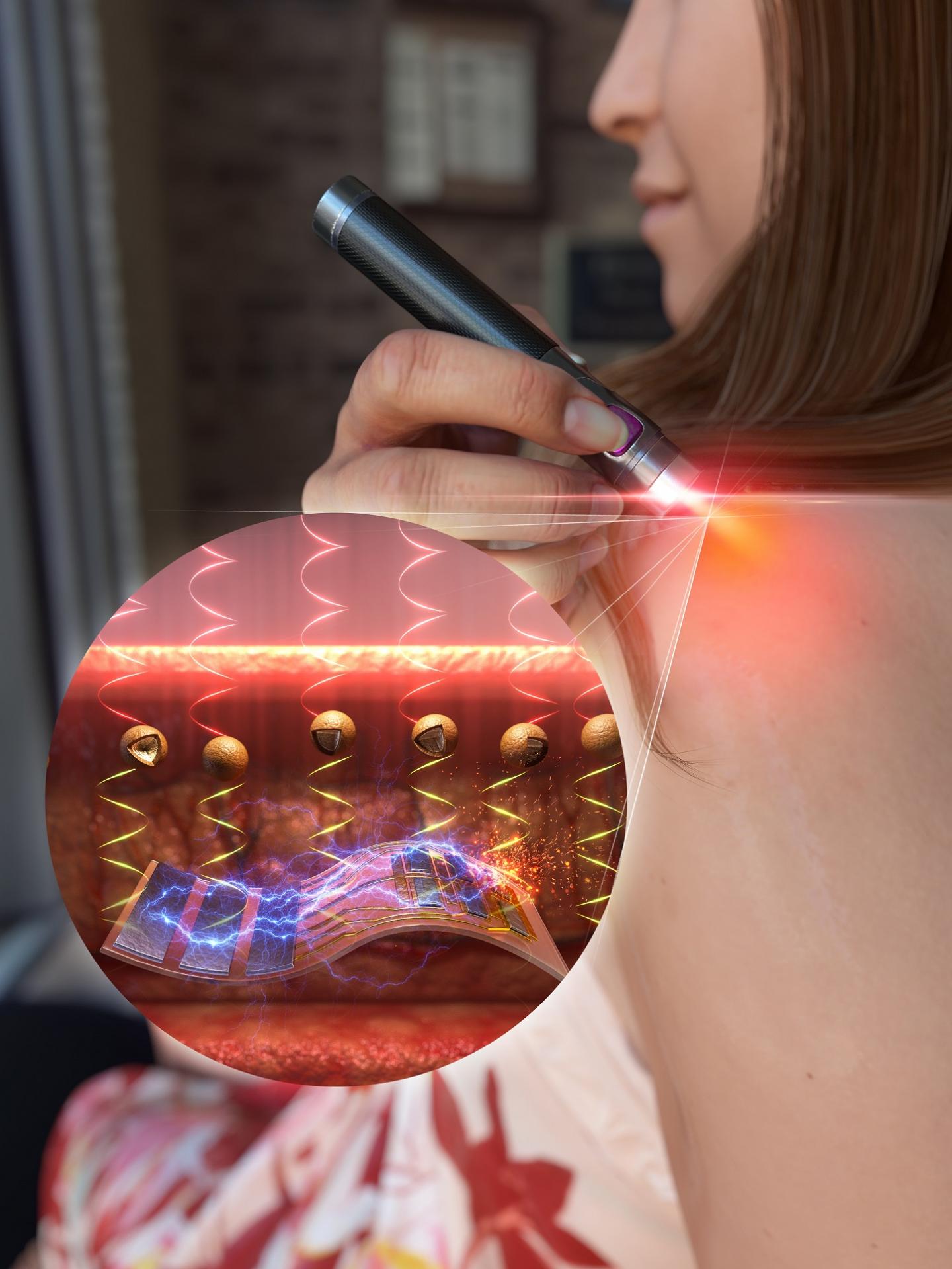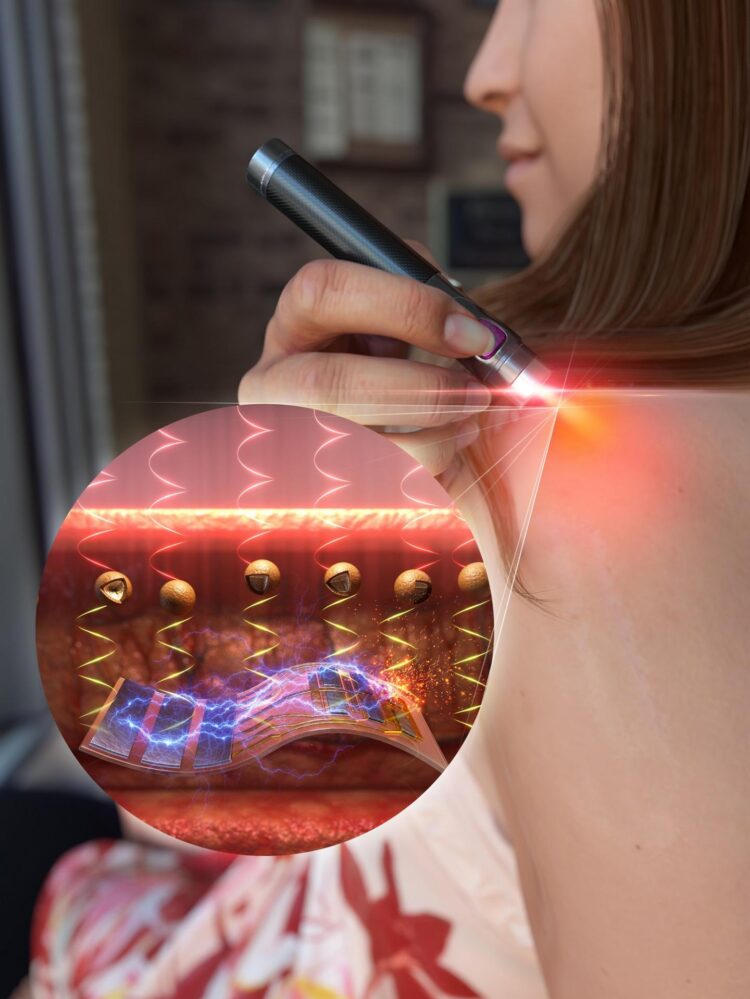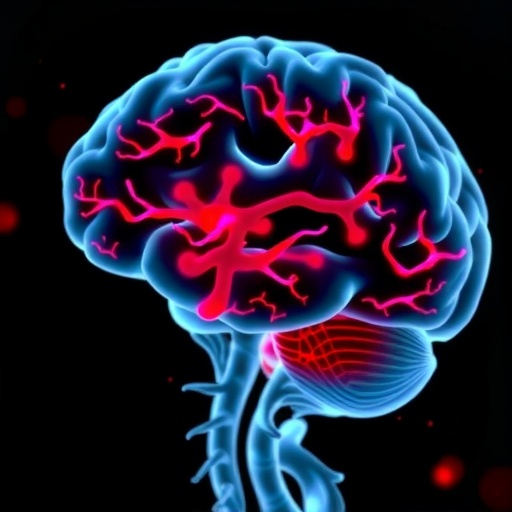
Credit: POSTECH
A new concept of on-demand drug delivery system has emerged in which the drugs are automatically released from in vivo medical devices simply by shining light on the skin.
A research team led by Professor Sei Kwang Hahn of the Department of Materials Science and Engineering and Professor Kilwon Cho of the Department of Chemical Engineering at POSTECH have together developed an on-demand drug delivery system (DDS) using an organic photovoltaic cell coated with upconversion nanoparticles. This newly developed DDS allows nanoparticles to convert skin-penetrating near-infrared (NIR) light into visible light so that drug release can be controlled in medical devices installed in the body. These research findings were published in Nano Energy on March 1, 2021.
For patients who need periodic drug injections as in the case of diabetes, DDSs that automatically administer drugs in lieu of repetitive shots are being researched and developed. However, its size and shape have been restricted due to limitations in power supply for operating such a device.
The research team found the answer in solar power. Upconversion nanoparticles were used for the photovoltaic device to induce photovoltaic power generation with NIR light that can penetrate the skin. An organic photovoltaic cell coated with a core-shell structured upconversion nanoparticles was designed to operate a drug delivery system made of a mechanical and electronic system by generating an electric current upon irradiation of NIR light. When electricity is applied in this manner, the thin gold film sealing the drug reservoir melts and the drug is released.
“The combination of a flexible photovoltaic cell and a drug delivery system enables on-demand drug release using light,” explained Professor Sei Kwang Hahn. “The drug delivery system is activated using near-infrared light that is harmless to the human body and is highly skin-penetrating.”
He added, “Since this enables nimble control of drug release of medical devices inserted into the body by using near-infrared light, it is highly anticipated to contribute to the development of phototherapy technology using implantable medical devices.”
###
This research was financially supported by the Global Frontier Program, the Engineering Research Center Program, and the Mid-career Researcher Program of the Korean Ministry of Science and ICT.
Media Contact
Jinyoung Huh
[email protected]
Original Source
http://postech.
Related Journal Article
http://dx.





